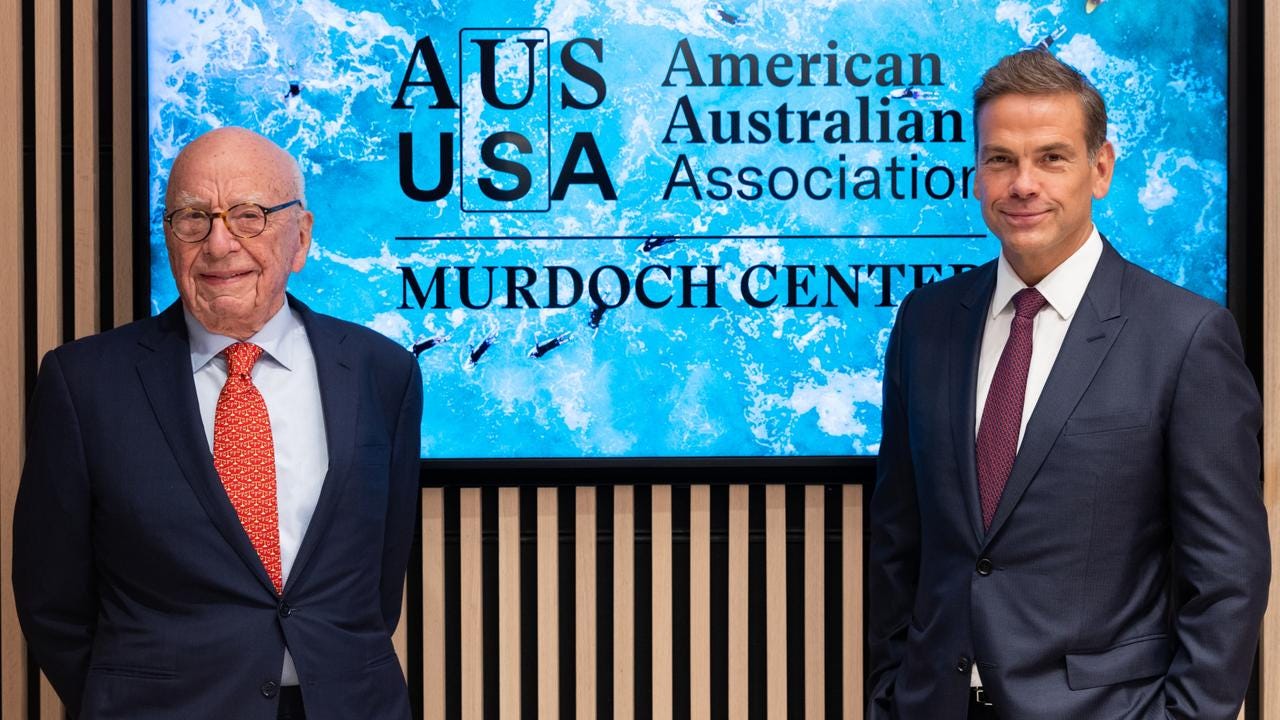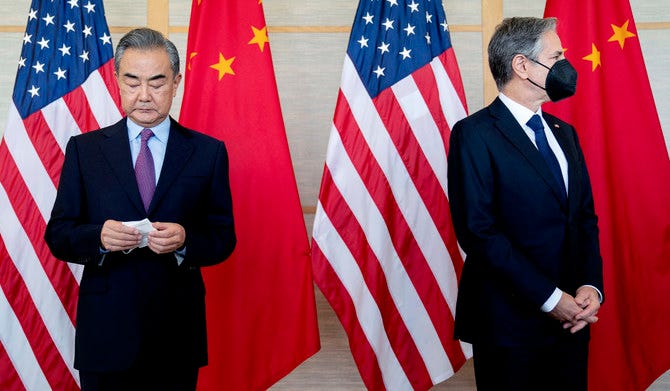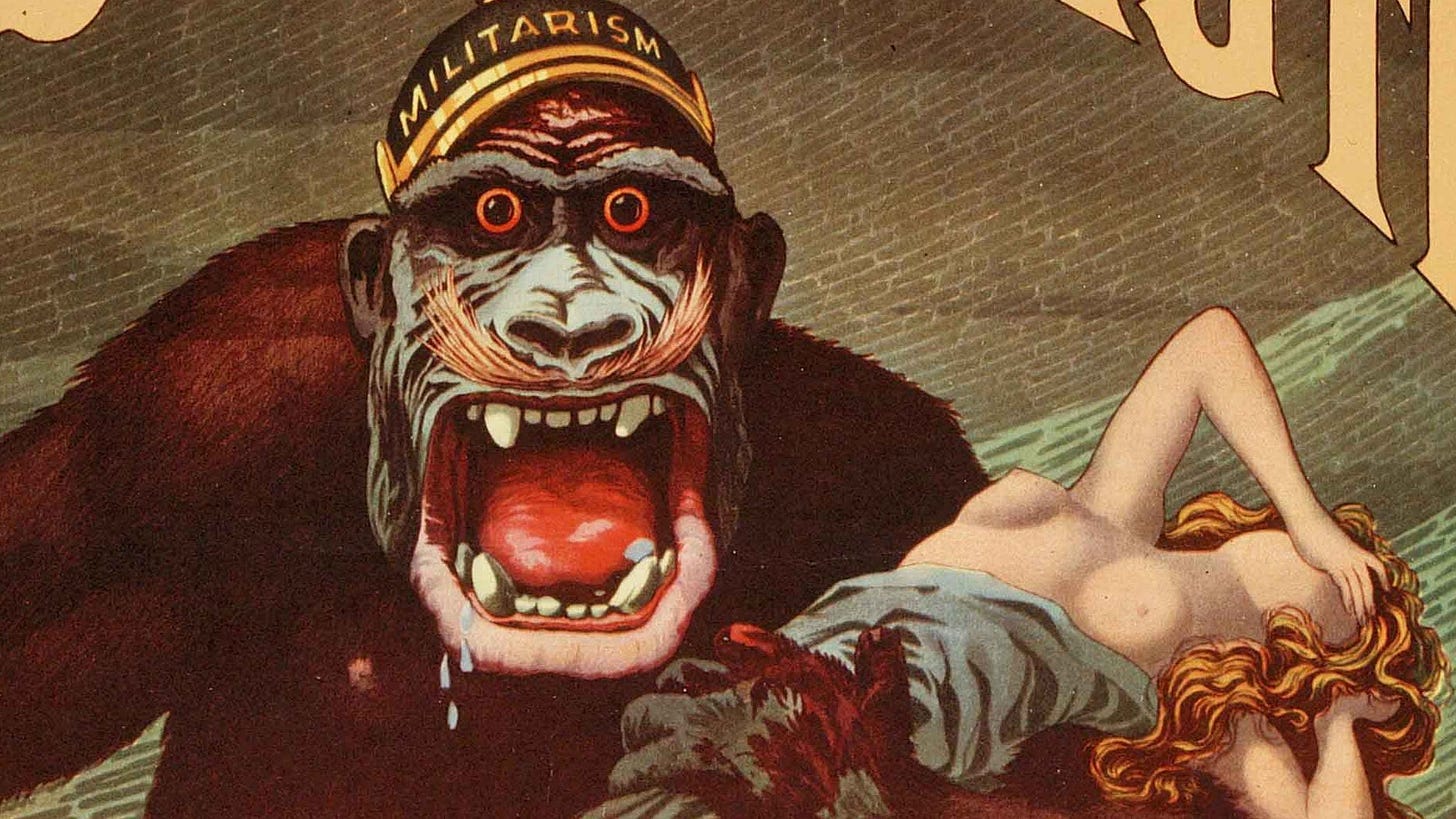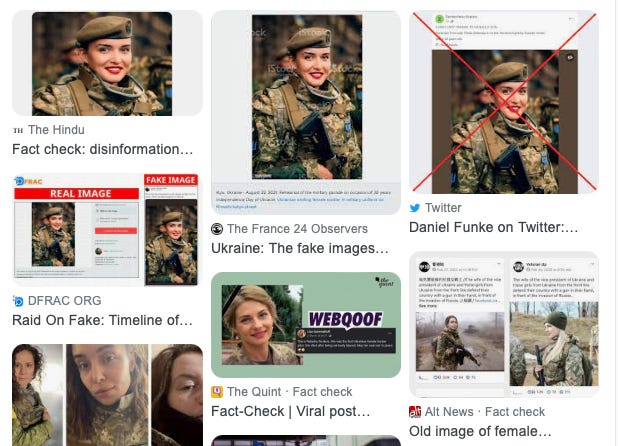#Public Information
media spaces are complex networks of persuasion & propaganda, state & private interests, misinformation & disinformation, opinion & speculation that constitute a vast web of deceit and deception
UPDATE: Headlines in early March 2023 implied Fox News mogul Rupert Murdoch had made a damning confession. He had affirmed that some of his most important journalists were reporting that the 2020 presidential election was a fraud – even though they knew they were propagating a lie.
Hate speech incites violence and intolerance. The devastating effect of hatred is sadly nothing new. However, its scale and impact are now amplified by new communications technologies. Hate speech – including online – has become one of the most common ways of spreading divisive rhetoric on a global scale, threatening peace around the world.
Public diplomacy – in the sense of engaging with publics – is as old as governance. All governments have programmes of national self-promotion built on distinct culture, geography, trading opportunities or other niche specializations. All are aware of the power of the media and the internet, and grapple with how best to use them to their advantage.
President Woodrow Wilson’s Committee on Public Information (CPI) was not an educational organisation, but aimed to counter existing stories in the press that often highlighted negative features of American life such as “strikes and lynchings, riots,” and corruption, and to publicise the positives of American life and foreign policy.
In the early 1990s, Senator Patrick Moynihan campaigned for the abolition of the CIA. The brilliant campaigner thought the US Department of State should take over its intelligence functions. For him, the age of secrecy was over. With the collapse of the Soviet Union, the agency’s role was less clear, and it came under heavy criticism for having distorted intelligence and “blatantly pandered” to one ideological viewpoint: blind anti-communism.
Media lies and impunity
Headlines in early March 2023 implied Fox News mogul Rupert Murdoch had made a damning confession. He had affirmed that some of his most important journalists were reporting that the 2020 presidential election was a fraud – even though they knew they were propagating a lie. It was an admission during pretrial testimony in a libel lawsuit filed against Fox by a voting machine company that says it was defamed by the lie. For journalism practitioners and devotees, the admission should signal the end of the Fox News empire.
Nope. It didn’t.
Such a disgraceful demise would seem inevitable when journalists – professionally trained truth gatherers, employed by a news organization, which is an institution that exists to provide truthful information – choose not to do so.
Nope.
That’s because a business that calls itself a news organization actually does not have to be one - but it does have to be a business. Businesses exist primarily to make a profit and doing actual news isn’t essential. Adam Serwer, reporting for The Atlantic, wrote “sources at Fox told me to think of it not as a network per se, but as a profit machine.”
News businesses or profit machines can hire anybody who falls off a turnip truck and label them journalists because the job has no standardized requirements.
The U.S. Bureau of Labor Statistics lists “None” as requirements for work experience and on-the-job training for journalists but indicates a bachelor’s degree is typical. Accordingly, the Fox News business people could choose to spread election lies and insist, as court documents indicate, that it made good business sense to do so because much of their audience did not want the actual truth about that topic.
These are some of the troubling takeaways from Murdoch’s defense of his news business against a libel lawsuit filed by Dominion Voting Systems, the company implicated by Fox’s election fraud allegations. Fox essentially admits to publishing false information about Dominion, but argues it is nonetheless protected from liability. It is a defense grounded in the First Amendment, which protects press freedom so robustly that it also protects the irresponsible use of that freedom.
Read full article here.
UN Strategy and Plan of Action on Hate Speech
Hate speech incites violence and intolerance. The devastating effect of hatred is sadly nothing new. However, its scale and impact are now amplified by new communications technologies. Hate speech – including online – has become one of the most common ways of spreading divisive rhetoric on a global scale, threatening peace around the world.
The United Nations has a long history of mobilizing the world against hatred of all kinds to defend human rights and advance the rule of law. The impact of hate speech cuts across numerous UN areas of focus, from protecting human rights and preventing atrocities to sustaining peace, achieving gender equality and supporting children and youth.
Because fighting hatred, discrimination, racism and inequality are among its core principles, the United Nations is working to confront hate speech at every turn. This mission is enshrined in the UN Charter, in international human rights frameworks and in global efforts to achieve the Sustainable Development Goals.
In response to the alarming trends of growing xenophobia, racism and intolerance, violent misogyny, antisemitism and anti-Muslim hatred around the world, UN Secretary-General António Guterres launched the United Nations Strategy and Plan of Action on Hate Speech on 18 June 2019. This first UN-wide initiative designed to tackle hate speech provides a road map on how the Organization can support and complement States' efforts. The strategy emphasizes the need to counter hate holistically, while respecting freedom of opinion and expression, and to collaborate with relevant stakeholders, including civil society organizations, media outlets, tech companies and social media platforms.
Download the United Nations Strategy and Plan of Action on Hate Speech
Training for Public Diplomacy
Public diplomacy – in the sense of engaging with publics – is as old as governance. All governments have programmes of national self-promotion built on distinct culture, geography, trading opportunities or other niche specializations. All are aware of the power of the media and the internet, and grapple with how best to use them to their advantage. All encourage their diplomats to get out into the society of the country to which they are posted and especially beneath its surface, where the beginnings of understanding can be found. Thus all governments, to the extent that they can afford it, train their diplomats to contribute to that essentially national effort.
Fewer foreign ministries yet prepare their diplomats to be players in or facilitators of the amorphous transnational networks. Those at the cutting edge of the profession recognize that they have to deal effectively with this emerging parallel universe in order to get the whole diplomatic job done. For many, however, this is not the proper work of a diplomat, or is only a subordinate part of the job. For some, lack of resources may prohibit any serious attempts at public diplomacy. Governments are thus at different stages in the evolution of their thinking on public diplomacy.
Training for public diplomacy varies accordingly. The conclusions presented here are drawn from a survey of diplomatic training programmes in some 20 countries on all continents, large states and small, developed and developing.1 The results demonstrate a pattern of sorts, an evolutionary path in training for public diplomacy that is defined partly in terms of resources and partly of intellectual and professional approach. Interestingly, there appears to be no direct correlation between the sophistication of the approach to public diplomacy and scale of resources devoted to it, and the specific training – if any – of diplomats for the task.
Read the full article here.
Propaganda: Woodrow Wilson and the Committee on Public Information
President Woodrow Wilson’s portrait of the Committee on Public Information (CPI) as an educational organisation underscored George Creel’s central thesis that the Committee’s patriotic efforts on behalf of the nation at war could not be characterised as propaganda or censorship. Creel was adamant that “in no degree was the Committee an agency of censorship, a machinery of concealment or repression” (Creel 1920: 4). While the author conceded that the CPI aimed to counter existing stories in the press that often highlighted negative features of American life such as “strikes and lynchings, riots,” and corruption, Creel argued that the CPI’s role was simply that of publicising the positives of American life and foreign policy (Creel 1920: 7).
The CPI was about facts and, from this perspective, criticism of the organisation or its director stemmed from partisan attacks, extremist “patriotic” organisations such as the American Protective League, or simply miscommunication common within a large federal government. Propaganda was something practiced by Germany and akin to “deceit and corruption” while the CPI was an “enterprise in salesmanship, the world’s greatest adventure in advertising” (Creel 1920: 4). Often defensive in tone, How We Advertised America included internal government memoranda and letters to Creel and the CPI as evidence of the Committee’s admirable role. One of these was an eighteen-point voluntary agreement between the CPI and the American press entitled, “What the Government Asks of the Press.” The memo outlined the government’s prohibition of news articles on such subjects as troop movements, military bases, and shipping. Creel, who authored the original document in the early weeks of the war, explained that the relatively short memo was the Committee’s “one and only connection with censorship of any kind” (Creel 1920: 27).
Creel’s defensiveness about the CPI was not unwarranted as he admitted that the organization was often maligned in Congress and among journalists. Challenges to Creel’s assertions about the CPI did not end after Creel’s account as Harold D. Lasswell, a political scientist, highlighted the organisation in his book, Propaganda Technique in the World War (1927). Lasswell’s analysis was part of a larger scholarly interest in modern propaganda after the war and his global focus compared the nature and production of propaganda in Germany, France, Britain, and the United States. Framing propaganda as largely an instrument of foreign policy, Lasswell’s interpretation conflicted with Creel’s romantic portrait of the CPI in that he claimed that modern war required propagandists to “mobilize the hate of the people” and capitalize on “traditional prejudices” in an attempt to demonize the enemy (Lasswell 1927: 47, 192).
Lasswell agreed with Creel about the unfair “abuse” of the CPI amid a distrustful Congress and yet, unlike Creel, he stressed the central role of Wilson in the era’s development of propaganda. Lasswell argued that American propaganda was espe- cially effective for two reasons. First, the CPI’s relatively singular message of Wilso- nian democracy was due to the fact that, unlike similar organizations in Europe, the CPI and its propaganda machine emerged only after America’s entrance in the war. Second, Lasswell described Wilson’s approach to propaganda as a “matchless per- formance” (Lasswell 1927: 217). In contrast to Creel, Lasswell argued that Wilson “brewed the subtle poison, which industrious men injected into the veins of a staggering people, until the smashing powers of the Allied armies knocked them into submission” (Lasswell 1927: 217).
The inside story of the CIA v Russia – from cold war conspiracy to ‘black’ propaganda in Ukraine
Edited
In the early 1990s, Senator Patrick Moynihan campaigned for the abolition of the CIA. The brilliant campaigner thought the US Department of State should take over its intelligence functions. For him, the age of secrecy was over. With the collapse of the Soviet Union, the agency’s role was less clear, and it came under heavy criticism for having distorted intelligence and “blatantly pandered” to one ideological viewpoint: blind anti-communism.
With a formidable Kremlinologist now in charge of the CIA and Donald Trump out of the presidential picture, the agency might be expected to be an influential player in the US response to a “new cold war”. To shed light on the CIA, we need to go back to the early days of the Ronald Reagan presidency.
As US president from 1981 to 1989, the neoconservative Reagan unleashed the CIA from restrictions that had been imposed on it during the reforming post-Vietnam 1970s. Like other anti-communists, Reagan saw the agency as a prime weapon in weakening the Soviet Union, which he famously denounced as the “evil empire”, and preventing the worldwide spread of communism. He chose as his CIA director Bill Casey, a veteran of intelligence in the second world war – a time when it had been “gloves off” for dirty tricksters.
An outright cold warrior, Casey resuscitated old CIA habits, running covert operations against the left-leaning – but democratically elected – Sandinista government in Nicaragua from December 1981 to the ceasefire of March 1988. The CIA worked closely with the Contras, right-wing terrorists who sought to overthrow the Sandinista government. The agency trained these guerrillas in secret camps in adjacent countries and organised munition drops from planes stationed in clandestine bases. Arms were illegally supplied to Iran (then at war with Iraq) via Israel – paid for by covert Iranian financial assistance to the Contras.
On the threat posed by the Soviet Union, the CIA’s senior Russia expert, Bob Gates, proclaimed that the Soviet Union was an example of “oriental despotism”.
The CIA worked tirelessly to undermine the Soviet Union – secretly supporting Poland’s opposition movement Solidarity, and engaging in acts of economic sabotage against the Soviet economy.
Gates suppressed findings that the Soviet Union was not, in fact, orchestrating mischief in Iran, Libya and Syria. As the US government desperately sought a rationale for invading Iraq, the CIA endorsed the mythical charge that Iraq was developing weapons of mass destruction (WMD). And when the ensuing war was a disaster, the CIA took the hit for having delivered that faulty intelligence.
Even in the early days of the Iraq war, however, the Intelligence Reform and Terrorism Prevention Act of 2004 had already stripped the agency of its central role in evaluating intelligence, handing the job to a new and independent director of national intelligence, John Negroponte.
By the mid-2000s, intelligence work was being heavily outsourced to private businesses in accordance with the ideology of the George W Bush administration. Private recruiters such as Blackwater were appearing at the CIA HQ’s cafeteria in Langley, Virginia, hiring personnel with promises of big salary increases before sometimes subcontracting them back to the agency at inflated rates.
The CIA directors agreed to engage in unsavoury practices including torture, illegal kidnapping, and execution-by-drone without trial. Waterboarding was a common practice in the agency’s “dark sites” – secret interrogation centres in Poland, Egypt and other countries around the world where kidnapped suspects were held.
In 2013, Snowden leaked numerous files to the Guardian and Washington Post before fleeing to Russia in order to evade rendition by the CIA. His revelations about US internal surveillance practices infuriated the guardians of America’s secrets, and fed the fears of those who deplored the use of dirty tricks abroad – and the development of a “secret state” at home.
The CIA’s fortunes really began to revive with the election of Donald Trump as the 45th US president on November 8, 2016. Yet in the immediate aftermath of his election, the outgoing Barack Obama administration effected a policy shift which saw a significant strengthening of the CIA’s Russia capability. In 2021, newly elected US president Joe Biden nominated his longstanding friend William J Burns as the CIA’s new director. Unlike some of his recent predecessors, Burns was no pushover.
Burns has previously likened Putin to the Romanov czars and claimed that Putin may resort to using nuclear weapons. From Putin’s perspective, the US and its CIA preach civilised values but do not observe them. He wrote in 2012 that they had spent decades upholding dictatorships in Latin America, regimes that routinely tortured to death thousands of their own citizens.
While US armed forces are responsible for passing on military intelligence such as that which enabled the sinking of Russia’s flagship the Moskva, the New York Times reported in June 2022 that CIA personnel were “directing much of the vast amounts of intelligence the US is sharing with Ukrainian forces”.
The CIA is almost certainly engaged in intelligence gathering and dissemination as well as “black” propaganda – psychological warfare aimed at Russians, Belarusians, Ukrainians and the wider world. Through undeclared strategies including the secret funding of both Ukrainian and international front organisations, it will attempt to bend world opinion to favour the Ukrainian cause and isolate the Russians.
Read more here.








